Shikoku: features of the breed and cultivation
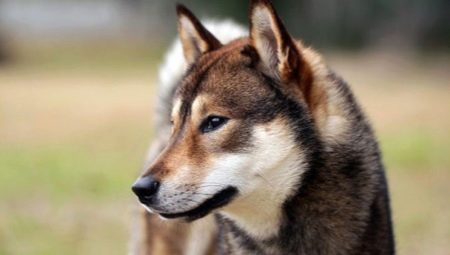
Shikoku is a breed of dog that is considered the property of Japan and is protected by the state. This animal is common in its homeland, but not very well known outside its borders.

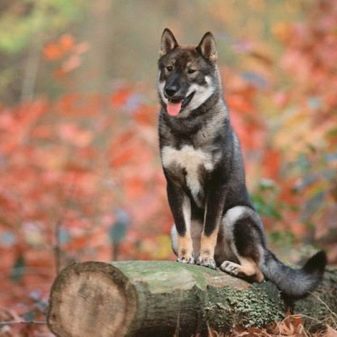
Origin story
According to some breeders, shikoku are the descendants of wild wolves, now extinct. Other scientists voice information that this breed was bred for the purpose of hunting a large game in the Kochi regions. Kochi-inu - this is how this dog is called in another way - the wound was kept by hunters in the western and northern points of Shikoku. Since the territory is dominated by mountains, the possibility of mating dogs with other breeds of dogs was excluded.
Therefore, to this day, purebred animals have survived in certain regions of Japan.... During the Second World War, the shikoku were practically exterminated, but after the end of this terrible period, the number of representatives of this breed began to rapidly recover.
In 1982, the Shikoku breed was officially recognized by the IFF. Currently, this dog is considered a rare representative of the animal world, even in its homeland.
In Japan, there are about 7,000 representatives, the number of which is increasing by 500 puppies every year.
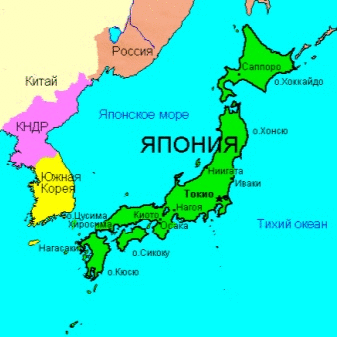

Description of the breed
Kochi Inu are dogs that have the inherent appearance of Japanese dogs. They are characterized by a lush tail that is thrown over the back in the form of a ring. The adherence of the hair of the animal is loose, for this reason the coat seems to be plush. The ears of the shikoku are erect, triangular in shape, slightly tilted forward. The pet is characterized by small, very expressive eyes and a special smile. The representative of this breed has average body size, reaching a height of 42 to 55 cm, with a weight of 20-25 kilograms... The pet's head is commensurate with the dimensions of the body. The shikoku's muzzle is elongated, with a weak stop and a wide forehead. The animal's nose is characterized by a straight back and a black lobe. Dry lips have good plumpness.
Representatives of this breed are characterized by the correct bite, wide set of small eyes with a dark iris. The dog is characterized by compact constitution, muscular development and bone strength. The height and length of the kochi-inu's body are correlated as 10 to 11. The pet has a strong neck, straight back, deep chest, tucked up belly and prominent ribs. The thick sickle tail lies on the back.


The limbs of the dog are strong with powerful joints. The paws are collected quite well, they have dense cushions with strong nails of a dark shade. Shikoku moves easily and confidently, preferably in short strides. The double coat of the animal's coat consists of short, coarse hair, as well as a short, delicate undercoat. The hair on the tail is longer than on other parts of the body.
Shikoku fur can be dyed sesame, black or red. The sesame type of coloring consists of a base color and a light tan added to it in several versions. In this situation, the base can be either black or red.
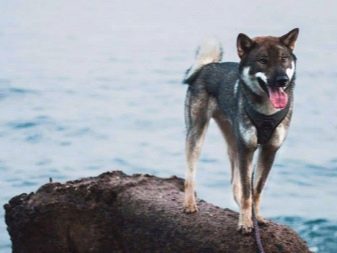
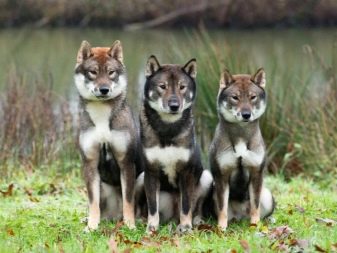
Character and behavior
Despite the primitiveness of the breed, the Kochi Inu has a close connection with its wild past. This suspicious and brave animal is loyal to its owner and his family. With a strong-willed and self-confident owner, this dog will be an obedient pet. Shikoku loves affection from a person and also prefers to be in the spotlight. For children, these dogs can make great friends if they are accustomed to it.
The dog treats strangers with tolerance, restraint. The representative of this breed has a strong territorial instinct, so he is always ready to warn the owner about invasions and threats. Many shikoku show aggression towards relatives, especially strangers. However, with good training, this problem can be avoided.
This dog treats other animals like game, but most of the hunting instincts of the beast were lost due to domestication.

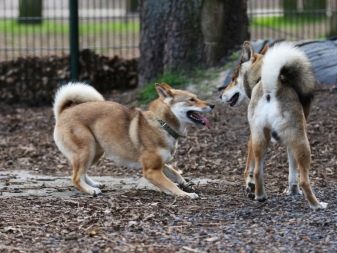
Often kochi-inu put up with other pets that live with him. This small Japanese dog is characterized by enthusiasm, integrity, poise, firmness of character. A loyal dog that has lost its owner in adulthood will not be able to get along with another person. Shikoku are passionate and enthusiastic, they are tough and collected hunters.
A vigilant and loyal pet can become an excellent guard and protector, as well as an irreplaceable friend and companion. Representatives of this breed of dogs are easy to train, as they are used to looking for authority from a person. A gifted pet understands and perceives everything that the owner tells him. In education and training, it is important to establish a respectful and trusting relationship with your pet. A shikoku teacher will need patience, enthusiasm, and kindness in his approach to class.
The animal also needs socialization and obedience training, while the important point is that you should not allow the shikoku to lead the family. The owner should control that the dog does not enter the door first, does not sleep on people's beds. When training a thoroughbred animal, you should not use physical activity, yelling at it and hitting it is simply unacceptable. The best training option for the dog would be a game in which the kochi-inu will quickly learn everything new.
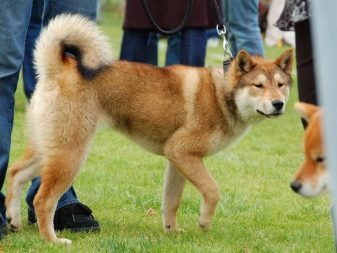
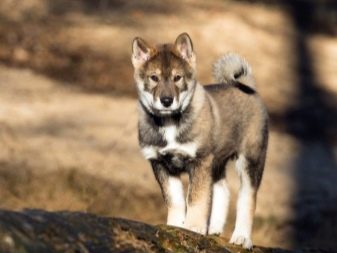
Conditions of detention and care
A pet in the form of a cat-inu can be got by experienced dog breeders, since these are not the simplest animals. The optimal conditions for them are considered to be a private house with an adjacent territory. Living in an apartment doesn't suit shikoku too well. These dogs require physical activity, long walks and 6 kilometers of jogging daily. The four-legged friend can be a great companion for morning and evening jogging.
Representatives of the Japanese breed are well adapted to being kept outdoors. In Japan, a pet lives in a booth equipped for it.... The room for the dog should be spacious with an area of about 3 square meters.
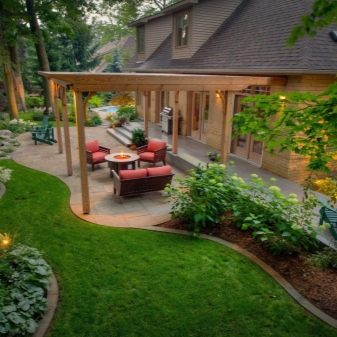
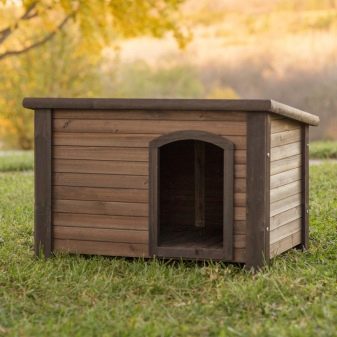
In the apartment, the dog will behave calmly, but only on condition that the walking is done regularly and for a long time. With a lack of physical activity, the animal will become restless, uncontrollable.
Kochi-inu shed heavily, so that the situation does not bring inconvenience, during this period they need to be brushed regularly and thoroughly... The rest of the time they are combed out once every 7 days, since the fur of this breed is capable of self-cleaning. A scallop is required for this procedure. You need to bathe the dog every few months.
It is worth examining the eyes and ears of the shikoku daily and cleaning them if necessary. Dogs' nails grow quickly, so they should be trimmed. It is recommended to brush your pet's teeth every 7 days.


Feeding
The geography of origin and residence of the shikoku determined the dietary habits of the animal. Previously, they were fed with rice porridge, fish, wild boar and deer meat. Buckwheat and oatmeal can be added to the dog's diet. And it is also worth feeding the pets with lean meat, pitted sea fish that are thermally processed. From an early age, puppies should be taught to eat raw vegetables and fruits.
It is strictly forbidden to feed the dog from your table, as it can be harmful to his health. Kochi Inu should not be given flour, seasoned, pickled and smoked foods. Animals should not be overfeeded, and food must be served strictly at the same time.
Most breeders and shikoku owners feed their pets with commercial feed. It is with this method of nutrition that the dog receives everything it needs for normal life. In the variant with feeding with natural products, with a shortage of some components, the dogs may develop dementia. An unbalanced menu can lead to disruption of the functioning of the gastrointestinal tract, heart and blood vessels.
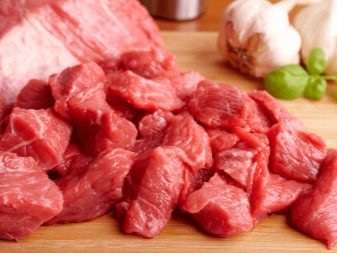
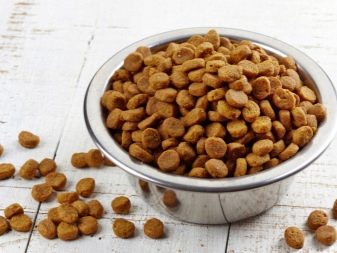
Health and longevity
The Shikoku breed belongs to hardy animals with good health, they can adapt to a variety of conditions. This pet is ill infrequently, but among the most common ailments the following can be distinguished:
- allergic dermatitis;
- neuralgia;
- dysplasia of the hip and elbow joints;
- arthritis;
- diseases of the heart system;
- food allergy;
- a problem with the functioning of the ears;
- eye diseases.
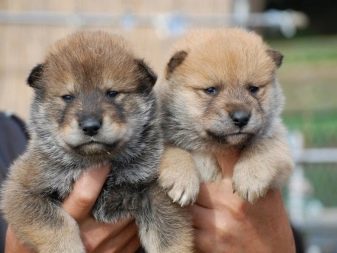

Genetic pathologies are not observed in this group of animals. For preventive purposes, dogs should be vaccinated regularly. The owner of the dog should not forget about vaccination against rabies, distemper, enteritis. With proper care and feeding, shikoku can live for about 14 years.
Kochi Inu can be called a relict exotic among dogs. You can buy a real purebred puppy only in Japan. This pet is a luxury purchase as it costs up to $ 12,000. When a shikoku appears in the house, the owner can be sure that he has started a real watchman, a faithful friend and companion.
If you are a traveler, sportsman or fisherman, then this dog breed is for you.

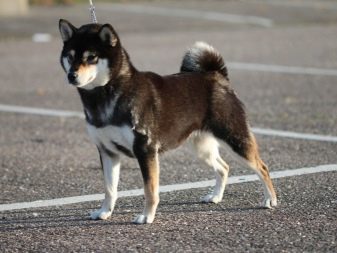
In the next video you will find interesting facts about the Shikoku dog breed.






































